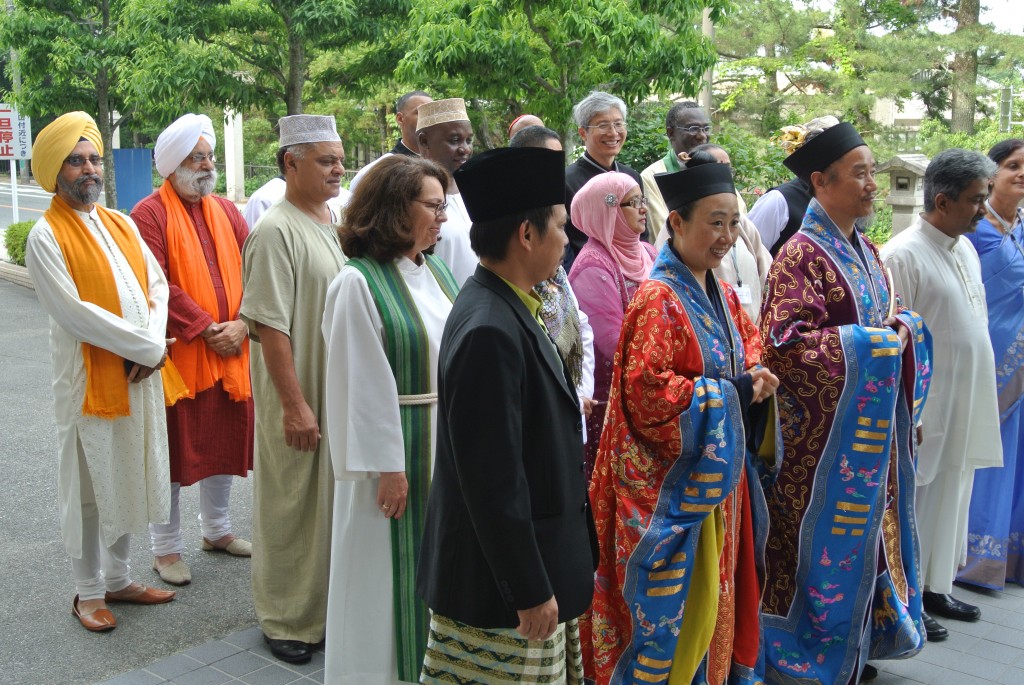
With a Daoist monk at the front, ARC’s interfaith representatives line up at the beginning of their parade to Ise Jingu’s Naiku
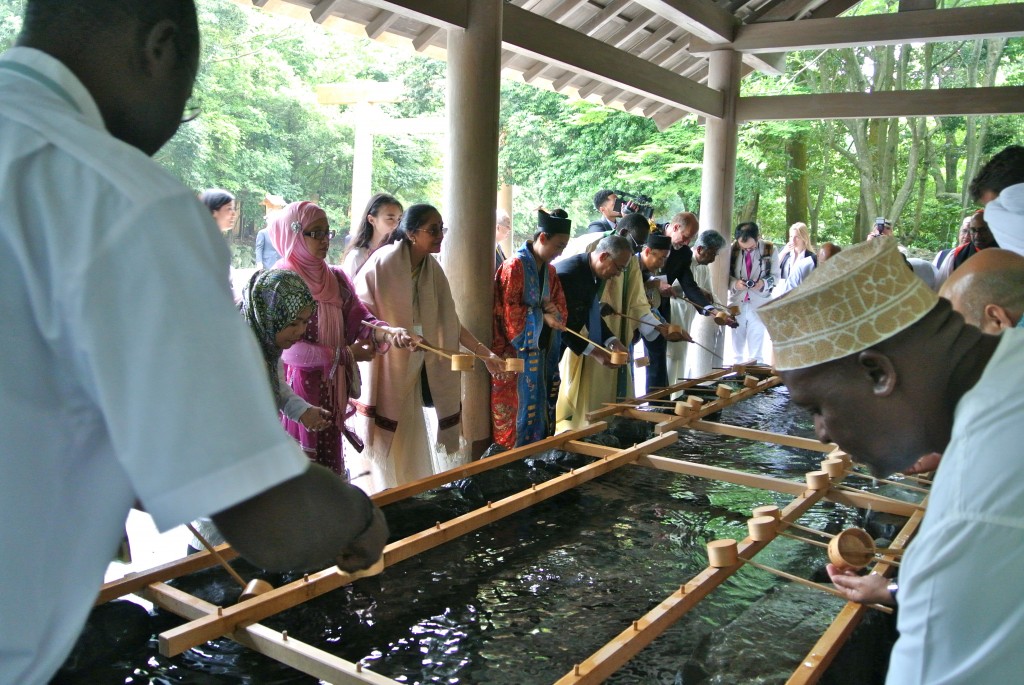
ARC delegates are taught how to use the ‘temizuya’ water-basin for purification
The international meeting on conservation held at Ise Jingu on June 3-5 was a historic event for Jinja Honcho (Association of Shrines). It was the first time for official Shinto to engage equally with other faiths in a joint project. For a faith inclined to be secretive and insular, it was a major step. This was signalled by the President of Jinja Honcho, when he joked at the beginning of his speech that since there was simultaneous translation he should be careful what he was saying!
The significance of the meeting was underlined by the venue, Jingu Kaikan, a ten-minute walk from the sacred Ujibashi bridge of the Ise Shrine. In the words of the press release, the event represented ‘a historic opening of the Shinto religion towards other faiths and cultures.’ Metaphorically speaking, it was as if Shinto itself was crossing a bridge.
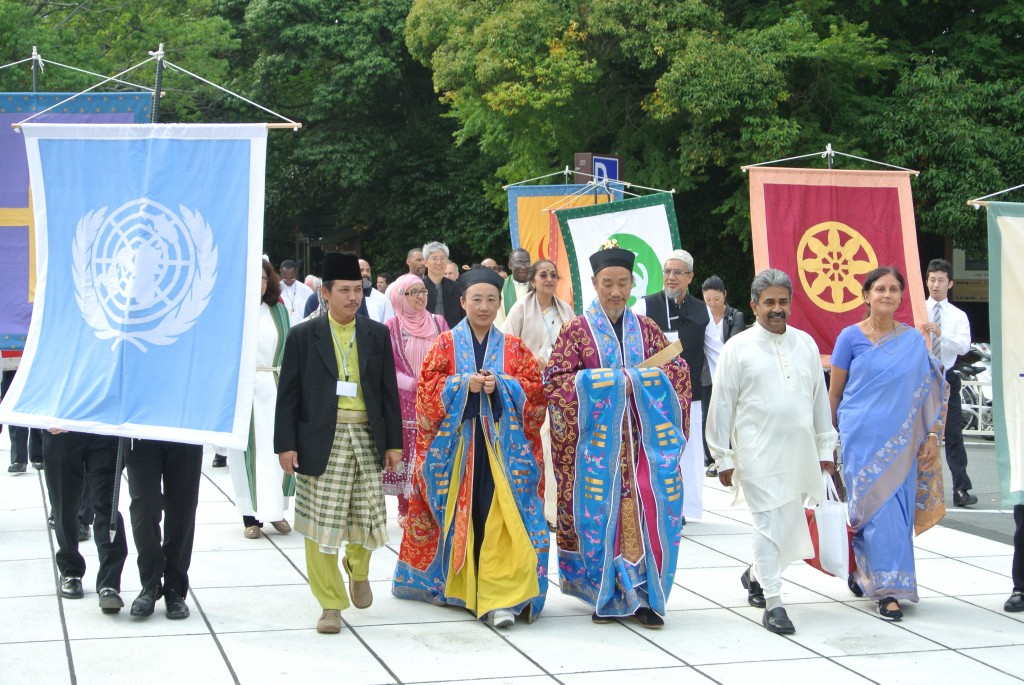 ARC
ARC
The four days of meetings were jointly held by Jinja Honcho with ARC – the Alliance for Religions and Conservation. But what is it exactly? Founded by the UK’s Prince Philip in 1995, it is an NPO that operates out of Bath and works with 12 major faiths to protect sacred sites and promote environmental policies such as the creation of ‘green pilgrimages’. Funding comes from such sources as the Norwegian government, which set aside money from its oil funds for precisely such projects. (How refreshing for a government to be using its budget for peaceful projects instead of war!!)
Despite its relatively small size, ARC has a worldwide impact. This is because adherents of the major religions comprise some 85% of the world’s population, moreover they own 7 or 8% of the world’s forests. They also comprise the third largest investment block in the world, so there is a huge potential for meaningful change. In Africa longterm environment plans have been launched by Christian, Muslim and Hindu religions, together with farming initiatives. In China, Daoists have created a pilgrim eco-city at Louguan.
The partnership with Jinja Honcho began in 2000 when the Association of Shrines officially joined and produced the Shinto Statement on the Environment. (See here.) It has already resulted in a highly significant step, with the Association of Shrines committing itself to procuring sustainable wood for rebuilding its member shrines. This is particularly noteworthy since the wood is imported from South-East Asia, where whole tracts of forest are being destroyed to provide lumber for Japan.
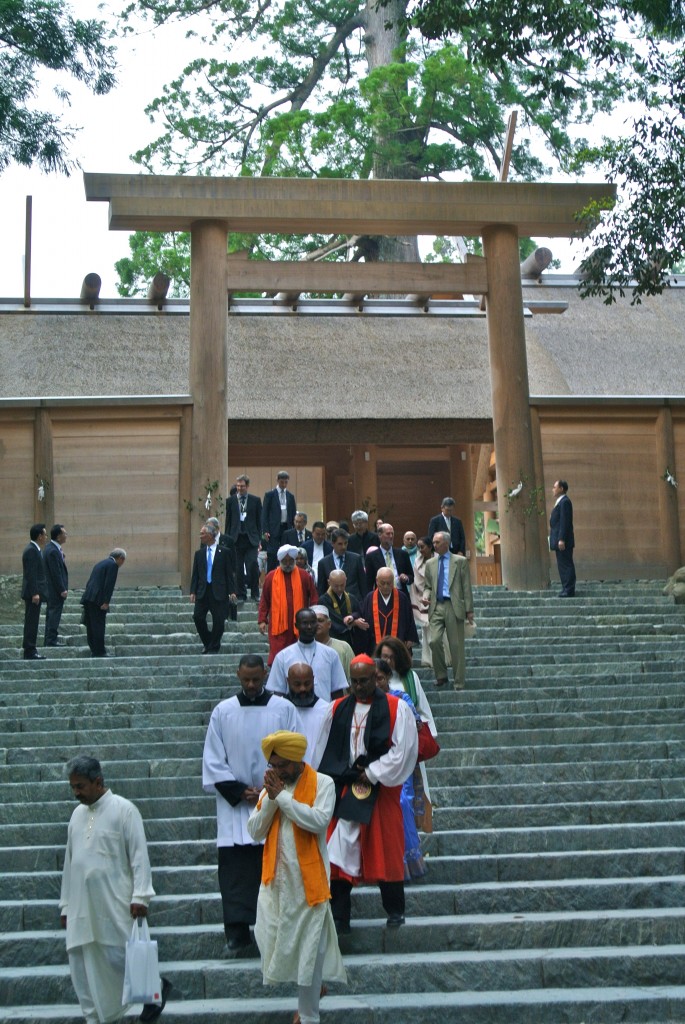 Messages of support
Messages of support
Throughout the event there were messages of support by dignitaries, such as Prince Charles, who noted that Shinto as a religion of awe had much to offer the modern world. The deputy Secretary-General of the UN was also in attendance, as the talks were intended to feed into the organisation’s Strategic Goals.
The highlight of the ARC programme was a parade with banners and costumed representatives of eight different faiths to Naiku. Here at Japan’s premier Shinto shrine, the faith representatives paid respects to the sun goddess, Amaterasu Omikami. The group included Christians of different orders, Buddhists, Muslim representatives, a Hindu, a Jain, Confucian and a Daoist master.
Having lined up to cross the bridge, the group were taken to the temizuya (water basin) where there was a demonstration of how to cleanse oneself together with the suggestion that the ablutions represented a return to natural purity. Then the group proceeded to the Naiku itself, where the religious representatives of the major faiths were taken into the outer compound for a brief prayer and bow.
Later that evening discussions of green values and conservation matters were followed by evening entertainment of Ise-Dai-Kagura, with the heads of Ise Jingu and Jinja Honcho in attendance. The kagura dance was performed in the Edo era (1600-1868) at shrines and people’s private houses as form of ritual dance and purification. It featured a shishi dance combined with acrobatics in a crowd-drawing attraction, which would once have provided an opportunity to dispense amulets to those otherwise unable to travel to Ise to get one.
**************************************************************************************************
For a different take on the conference, see the report in the Independent here. For Part 2 of the report, click here.
**************************************************************************************************
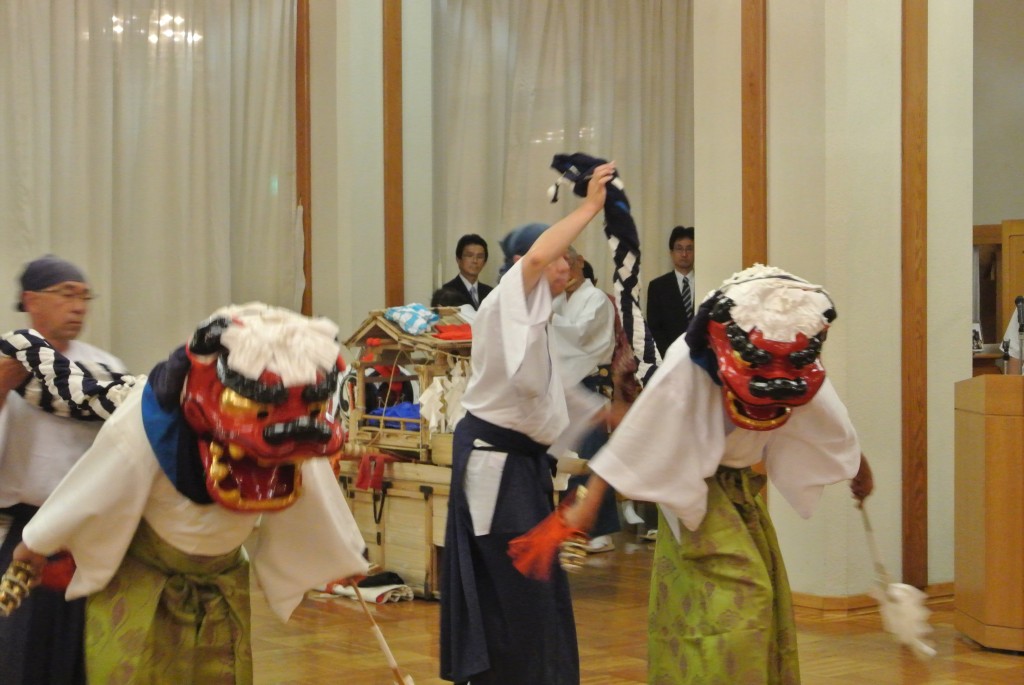
The lion dance (shishi) was designed to attract attention…
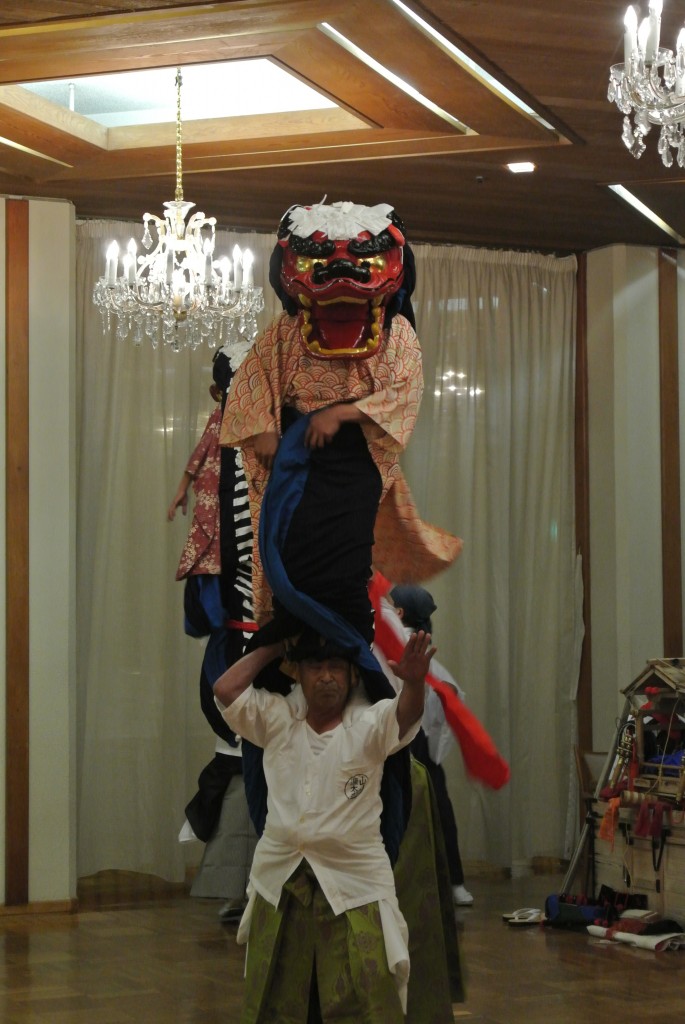
… and the acrobatics involved certainly were eye-catching!

Thank you for keeping us updated about the ARC meeting on the precincts of Ise Jingu. I am looking forward to the next part(s). I am also glad with the link to the article in the Independent.
Journalist Paul Vallely informs us well how Jinja Honcho entered ARC and how United Nations hopes to use the results of this meeting as an incentive for world leaders to sign the agreement about sustainable development goals at the next UN General Assembly in September 2015.
Was it a cool understatement that you referred to this article as being a different take on the conference?
What the author writes about Shinto is pathetically biased by historical ignorance. When the ARC participants arrive at the Hiyokebashi they are received by the guardian of the bridge, whose job has been to prevent aliens from entering Ise Jingu in the past 2,000 years. However, already in the 19th century, (think of Lafcadio Hearn) foreigners were allowed to cross the bridge to Ise jingu.
Furthermore, it is bizarre that he mentions Taoism and Confucianism as the traditions of Japan’s historical enemy, since Shinto before the Meiji restoration was a mixture of shinto, tao and confucianism. The latter being imported in a time that China was seen as a model for Japan.
Finally it is not true that Meiji Emperor created State Shinto. It was created for him by the new politicians in an attempt to unify the nation against western imperialism.
It is a pity that the author was not better informed about the historical facts. As a result,this report about an otherwise outstanding historical meeting perpetuates an old prejudice about shinto. A missed opportunity.
Hi there, Paul, and thanks for the input. As a licensed Shinto priest, you have a discerning eye and an authoritative voice, so it’s very good to hear your viewpoint.